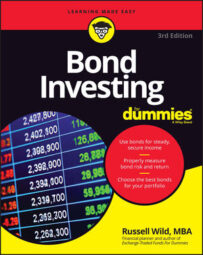About 99 percent of the approximately $15 trillion in outstanding Treasury debt is made up not of savings bonds but of marketable (tradable) securities known as bills, notes, and bonds. This “bills, notes, and bonds” stuff can be a little confusing because technically they are all bonds.
They are all backed by the full faith and credit of the U.S. government. They are all issued electronically (you don’t get a fancy piece of paper). They can all be purchased either directly from the Treasury, through a broker, or in fund form. They can all trade like hotcakes. The major difference among them is the time you need to wait to collect your principal:
Treasury bills have maturities of a year or less.
Treasury notes are issued with maturities from two to ten years.
Treasury bonds are long-term investments that have maturities of 10 to 30 years from their issue date.
The bills carry denominations of $100 but are sold on the open market at a discount from their face value. You get the full amount when the bill matures. The notes and bonds, on the other hand, are sold at their face value, have a fixed interest rate, and kick off interest payments once every six months. The minimum denomination for notes and bonds is $1,000.
The main difference among various Treasury offerings is the maturity. Generally, but not always, the longer the term, the higher the rate of interest. Therefore, the longer you can tie up your money, the greater your investment returns are likely to be. So one of the first questions you need to ask yourself before investing in Treasuries (or most other bonds, for that matter) is the following: When might I need to cash this baby out?
Keep in mind that you don’t have to hold any of these securities (bills, notes, or bonds) until maturity. You can, in fact, cash out at any point. The more time remaining before your bond is fully matured, the more its price can fluctuate and the more you risk losing money

